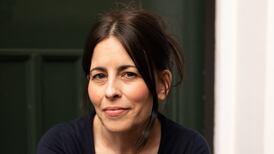In an era of ever-consolidating publishing behemoths, the stories of the personalities who shaped the industry continue to captivate. Robert Gottlieb’s 2016 memoir, Avid Reader, covered his time running Simon & Schuster and Knopf; Tony Faber told the “untold story” of his family business in 2019. In The Maverick, Thomas Harding explores the life and work of George Weidenfeld, a co-founder of Weidenfeld & Nicolson, now part of Hachette.
Weidenfeld, born in 1919 in Vienna, the only child in a Jewish family, was studying law and languages when the Germans annexed Austria. Seeing the writing on the wall, he obtained an exit visa and emigrated to England in 1938. His parents managed to join him a year later, but his two grandmothers died in the Holocaust.
Weidenfeld’s language skills landed him a job at the BBC – first in the overseas intelligence department listening to German radio and then producing content, where he made important contacts such as George Orwell and Charles de Gaulle. Having co-authored a book in 1942, The Goebbels Experiment: A Study of the Nazi Propaganda Machine, which the New York Times called “[a promising candidate for a prize for] the most unnecessary book of the year”, Weidenfeld concluded that he preferred the publishing process to “the hard work of writing”. After the war he launched a literary magazine, Contact, which pivoted to publishing books due to rules around paper rationing. With an investment from Nigel Nicolson, the son of Harold Nicolson and Vita Sackville-West, the firm was rebranded Weidenfeld & Nicolson in 1949.
The Maverick offers a behind-the-scenes peek at an imprint that published some of the most seminal works of the 20th century, when books, and the ideas within them, were far more revered
Rather than proceeding strictly chronologically, The Maverick is organised around a selection of books Weidenfeld was involved with, out of the more than 6,000 titles he published – a list that reflected his mission “to publish authors whose voices were normally shunned by mainstream publishers: the mavericks, the scandalous, the subversive”. The books covered include Isaiah Berlin’s The Hedgehog and the Fox, which was W&N’s first bestseller; Nabokov’s Lolita and Mary McCarthy’s The Group, both of which battled censorship; and Inside the Third Reich, a memoir by Albert Speer, a close ally of Hitler’s. Unusual at the time and unimaginable in today’s climate of cancel culture, Weidenfeld, a lifelong Zionist and supporter of Israel, thought it important to publish books by Nazis and fascists despite accusations of whitewashing history.
Dara Ó Briain: ‘I’m a man, I can’t manage family at the best of times ... now I’ve willingly taken on a 600% increase in family members’
Wills and family fall-outs: ‘Money and grief bring out the worst in people’
Manchán Magan: The deeper you dive into Icelandic culture, the more of Ireland you find
Domhnall Gleeson on nepo babies: ‘I’ve been so lucky. It’s important you can acknowledge it. Otherwise you’re lying to yourself’
The Maverick also recounts Weidenfeld’s colourful personal life. His first of four marriages was to Jane Sieff, a niece of the founder of Marks & Spencer. They had one daughter before the marriage ended due to Weidenfeld’s “casual infidelities”. A love affair with Barbara Skelton, the wife of Cyril Connolly (who was, in turn, having an affair with Caroline Freud), led to a marriage that lasted two years, after which Skelton and Connolly got back together. Weidenfeld’s third marriage was to Sandra Payson Meyer, an American heiress and arts patron who struggled with alcoholism; his fourth wife was Annabelle Whitestone, a concert organiser 27 years his junior.
Weidenfeld died, aged 96, in 2016. To create his posthumous portrait, Harding was given access to corporate and personal archives. He also spoke to more than 120 of Weidenfeld’s “colleagues, friends, family members and other acquaintances”, from whom varying impressions emerged. Some women[, including Antonia Fraser, who worked at W&N and whose best-selling books Weidenfeld published, remember him as respectful and supportive; others found him “creepy” and “inappropriate”.
The functional nature of his prose, with staccato sentences and fragments, is more irksome
Not all of the complaints were of a sexual nature: Alexandra MacCormick recalls being paid so little as a senior commissioning editor in the 1980s that she had to moonlight at a wine bar. When she asked for a raise, Weidenfeld suggested she ask her father or boyfriend for money. “Is it possible, is it even right, to judge someone’s behaviour from thirty or forty years ago by today’s standards?” Harding asks. (It’s a fair question, although perhaps a strange one from an author whose last two books – Legacy (2019), the history of Lyons tea houses, his family business; and White Debt (2022), about the Demerara uprising – advocate for reparations for slavery.)
Rather than being a literary mastermind, Weidenfeld was “an exceptional convener”, writes Harding. His “bottomless appetite for social engagement” was part of a meta-mission of bridge-building. It was also, perhaps, fuelled by a quest for belonging in the face of persistent anti-Semitism. In 1976, Weidenfeld was granted a life peerage by Harold Wilson, the outgoing Labour prime minister. But not even the House of Commons ensured acceptance in the establishment. A Daily Mail review of Weidenfeld’s 1994 autobiography, Remembering My Good Friends, concluded that “this uppity Jewish publisher” has a “certain soullessness, a constant fixation on the bottom line”.
“Who, in fact, was the real George Weidenfeld?” asks the book flap. Although painstakingly researched, a clearer portrait emerges of the business than the man. Harding was approached by W&N to write the biography thanks to a shared family history of escaping nazism. His best-known book is Hanns and Rudolf (2013), a pacy story of his great-uncle’s hunt for the commandant of Auschwitz. In the absence of such plot propulsion, the functional nature of his prose, with staccato sentences and fragments, is more irksome. Still, The Maverick offers a behind-the-scenes peek at an imprint that published some of the most seminal works of the 20th century, when books, and the ideas within them, were far more revered. A golden age indeed.
What’s a polite way of saying “it’s written like a middle-school book report”?
“Arthur arrived in England in August 1938. His journey had been long. From Vienna, he had taken a train to Zurich, then another to Paris, where he stayed a few days. Next on to Calais, from where he had taken a ferry to Dover, and finally another train to London. Among the belongings in his bag were documents he thought might prove useful in establishing his new life. His birth certificate and Austrian passport. His school and college reports.”













